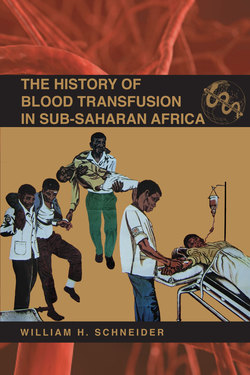The History of Blood Transfusion in Sub-Saharan Africa

Реклама. ООО «ЛитРес», ИНН: 7719571260.
Оглавление
William H. Schneider. The History of Blood Transfusion in Sub-Saharan Africa
Отрывок из книги
THE HISTORY OF BLOOD TRANSFUSION IN SUB-SAHARAN AFRICA
Series editor: James L. A. Webb, Jr.
.....
One of the doctors at the Hôpital des congolais who did blood transfusion after the Second World War was Joseph Lambillon, the head of the maternity service. He had first done transfusions in Africa shortly after he went to the Congo in 1938 to work in the eastern Kivu region at a hospital in Katana that was supported by the University of Louvain. Fresh from two years as an assistant in one of the top surgery services in Belgium, Lambillon was eager to introduce modern medical practices that were appropriate for the Congo. In 1940 he published an article, coauthored with the other doctor at the hospital, entitled “Étude de l’organisation d’un service de transfusions sanguines dans un centre hospitalier d’Afrique.”45 The report, in fact, referred to only thirty transfusions, but Lambillon was less interested in claiming credit for a new procedure than he was eager to demonstrate, like Lejeune before him, the viability of transfusion in the African setting. He concluded, “This note has no pretensions of innovation. But it permits us, in the end, to underscore that in the colonial setting blood transfusion is very easily done, thanks to the large number of chronic patients that are in all the native hospitals who can serve as donors. Transfusion has the very big advantage of being a striking treatment that above all is not costly, a fact which is of great importance in native medicine.” Lambillon thus showed it was not lack of donors, nor Africans’ rejection of the value of blood transfusion that stood in the way of using the lifesaving procedure. Doctors simply needed to use it.
The one place where Lambillon’s efforts most likely had an impact was at another hospital run by the University of Louvain in Kisantu, at the other end of the colony in Lower Congo. As late as 1934, this hospital reported no transfusions, despite its unusual link back to a major medical faculty in Europe. It was in the same year Lambillon’s article appeared (1940), however, that doctors at Kisantu began to treat severely anemic infants with blood transfusions. Once they had begun, they did so in a very systematic and extensive way. Throughout the 1940s and into the next decade, Kisantu Hospital treated over six hundred infants, most under a year of age, with over twenty-two hundred transfusions annually by 1949.46
.....